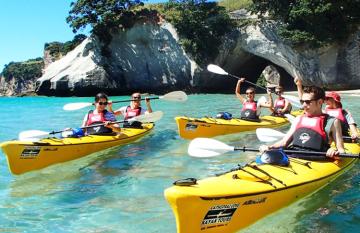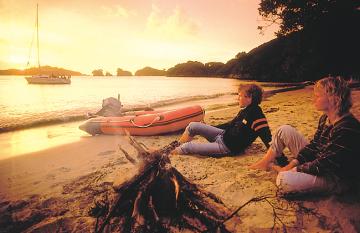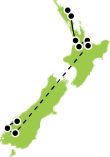
A group of intrepid New Zealanders are journeying across the Pacific Ocean to Easter Island in traditional Waka (double-hulled canoe) reliving Maori History.
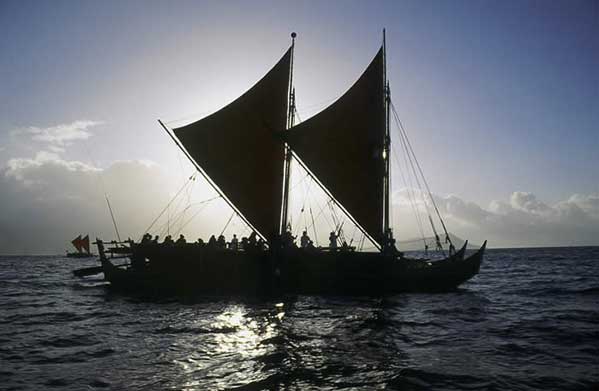
A group of intrepid New Zealanders are undertaking an amazing and some say perilous journey across the Pacific Ocean to Easter Island. They are sailing in a traditional waka hourua (double-hulled sailing canoes) without GPS or modern navigational tools, in a bid to retrace and revitalise the steps of their ancestors in Maori history; the crew are using only the stars and moon with ocean currents to guide them. Traditional methods of navigation waned soon after European settlement in the Pacific. Canoes were replaced with ships, the decline was so dramatic that theorists about canoe voyaging began to deny that planned Pacific journeys were even possible. With no cabins, nor mod-cons, this quest to find a small island in such an expansive ocean is nothing short of ... well mad! - May the wind be with you!
This voyage is expected to take up to 10 weeks each way, with stop-overs planned enroute at Raivavae and Mangareva. On the return journey they plan to stop in Tahiti and Raratonga. The crew hopes to travel 100 miles per day on average. This epic journey has been over 20 years in the making and is headed by 80-year-old Hekenukumai 'Hector' Busby a renowned Northland navigator and canoe builder, reknowned for his craft of traditional waka making. Busby built both of the double-hulled sailing canoes taking part in this expedition. He built the first and principal waka, Te Aurere, in the early 1990s after being inspired the arrival of the Hōkūle’a, a Hawaiian canoe that voyaged to New Zealand in 1985. 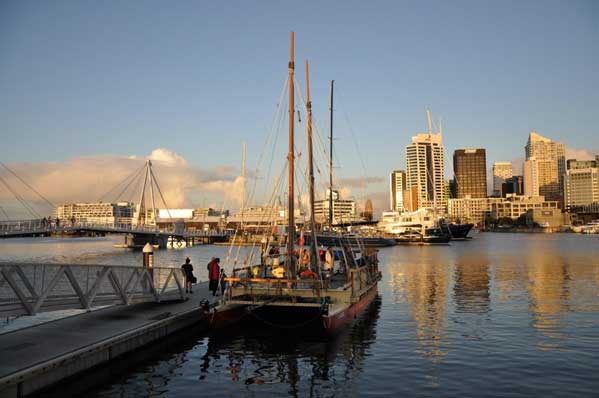 Te Aurere (Below), to date, has sailed over 30,000 nautical miles and has visited Hawaii, French Polynesia, the Cook Islands and New Caledonia. The recently built second waka, Ngahiraka Mai Tawhiti, was built to support vessel Te Aurere.
Te Aurere (Below), to date, has sailed over 30,000 nautical miles and has visited Hawaii, French Polynesia, the Cook Islands and New Caledonia. The recently built second waka, Ngahiraka Mai Tawhiti, was built to support vessel Te Aurere. 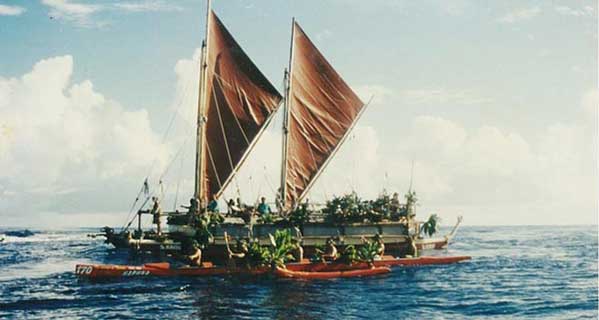
This historically-significant expedition, named Waka Tapu (sacred canoe), is being organised by the New Zealand Maori Arts & Crafts Institute in partnership with Te Taitokerau Tārai Waka.
The New Zealand Maori Arts & Crafts Institute Director, Karl Johnstone, says the voyage aims to close the final corner of the Polynesian Triangle, a triangle defined by Hawaii in the North, New Zealand in the South and Rapanui in the East. “While this voyage will close one chapter of Maori history, it also enables new chapters to be written and old skills to be relearnt" 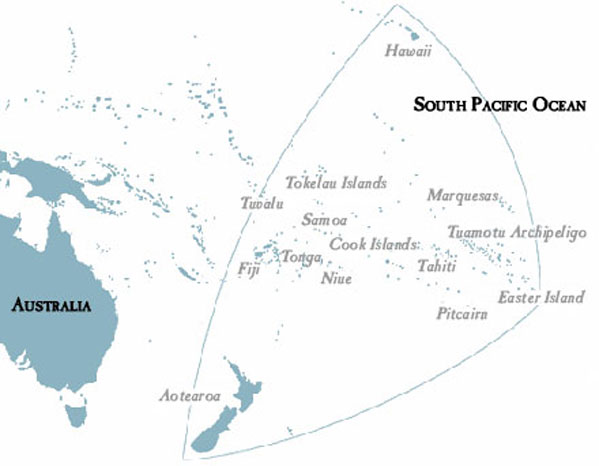 “While some historians believe the ancestors of Maori discovered this country by accident, there’s no doubt their voyages to and from New Zealand were deliberate and planned; the Pacific Ocean was a highway, not a barrier as many of us see it today,” Johnstone says. “They compiled star maps, traded knowledge, studied the flight path of birds, the migration patterns of whales, and used tidal movements and other environmental indicators to reach their destination safely and accurately and that’s what we will emulate.”
“While some historians believe the ancestors of Maori discovered this country by accident, there’s no doubt their voyages to and from New Zealand were deliberate and planned; the Pacific Ocean was a highway, not a barrier as many of us see it today,” Johnstone says. “They compiled star maps, traded knowledge, studied the flight path of birds, the migration patterns of whales, and used tidal movements and other environmental indicators to reach their destination safely and accurately and that’s what we will emulate.” 
The Waka departed from Auckland Wharf on the 17th of August 2012 and expect to arrive back in New Zealand in April 2013 (following layover to allow cyclone season to pass in either French Polynesia or Cook Islands)
If you are interested in a holiday in one of the South Pacific Islands, why not talk to one of our team that specializes in the region.
Recent Posts
Blog Categories
Blog archives
- February 2025 (3)
- January 2025 (6)
- December 2024 (12)
- November 2024 (3)
- October 2024 (2)
- July 2024 (2)
- May 2024 (12)
- April 2024 (2)
- March 2024 (2)
- January 2024 (2)
- November 2023 (10)
- October 2023 (4)
- August 2023 (1)
- May 2023 (2)
- April 2023 (2)
- March 2023 (17)
- February 2023 (4)
- January 2023 (4)
- December 2022 (11)
- November 2022 (7)
- October 2022 (1)
- May 2022 (1)
- March 2022 (3)
- February 2022 (3)
- January 2022 (1)
- December 2021 (1)
- August 2021 (1)
- June 2021 (1)
- May 2021 (2)
- February 2021 (1)
- August 2020 (1)
- July 2020 (1)
- May 2020 (1)
- April 2020 (1)
- March 2020 (1)
- January 2020 (1)
- December 2019 (1)
- November 2019 (1)
- October 2019 (1)
- September 2019 (1)
- August 2019 (5)
- July 2019 (2)
- June 2019 (1)
- May 2019 (3)
- April 2019 (1)
- March 2019 (1)
- February 2019 (1)
- January 2019 (1)
- December 2018 (1)
- November 2018 (1)
- September 2018 (1)
- August 2018 (1)
- July 2018 (1)
- June 2018 (1)
- May 2018 (1)
- April 2018 (1)
- March 2018 (1)
- February 2018 (1)
- January 2018 (1)
- December 2017 (1)
- October 2017 (1)
- September 2017 (1)
- August 2017 (1)
- July 2017 (1)
- June 2017 (1)
- May 2017 (1)
- April 2017 (1)
- March 2017 (1)
- February 2017 (1)
- January 2017 (1)
- December 2016 (1)
- November 2016 (1)
- October 2016 (1)
- September 2016 (1)
- August 2016 (1)
- July 2016 (1)
- June 2016 (1)
- May 2016 (1)
- April 2016 (1)
- March 2016 (1)
- February 2016 (1)
- January 2016 (1)
- December 2015 (1)
- November 2015 (1)
- October 2015 (1)
- September 2015 (1)
- August 2015 (1)
- July 2015 (1)
- June 2015 (1)
- May 2015 (1)
- April 2015 (1)
- March 2015 (1)
- February 2015 (1)
- January 2015 (1)
- December 2014 (1)
- November 2014 (1)
- October 2014 (1)
- September 2014 (1)
- July 2014 (1)
- June 2014 (3)
- May 2014 (1)
- April 2014 (1)
- March 2014 (1)
- February 2014 (1)
- January 2014 (1)
- November 2013 (15)
- October 2013 (1)
- September 2013 (1)
- August 2013 (1)
- July 2013 (1)
- May 2013 (1)
- April 2013 (1)
- March 2013 (1)
- February 2013 (1)
- January 2013 (1)
- December 2012 (1)
- November 2012 (2)
- October 2012 (2)
- September 2012 (2)
- August 2012 (2)
- July 2012 (2)
- June 2012 (2)
- May 2012 (2)
- April 2012 (3)
- March 2012 (2)
- February 2012 (2)
- January 2012 (2)
- December 2011 (2)
- November 2011 (1)
- October 2011 (2)
- September 2011 (1)
- August 2011 (1)
- July 2011 (1)
- June 2011 (1)
- May 2011 (1)
- April 2011 (1)
- March 2011 (1)
- February 2011 (1)
- January 2011 (1)
- December 2010 (1)
- November 2010 (1)
- October 2010 (1)
- September 2010 (1)
- August 2010 (1)
- July 2010 (1)
- June 2010 (1)
- May 2010 (1)
- March 2010 (1)
- February 2010 (1)
- January 2010 (1)
- December 2009 (1)
- November 2009 (1)
- October 2009 (1)
- September 2009 (1)
- August 2009 (1)
- July 2009 (1)
- June 2009 (1)
- May 2009 (1)
- April 2009 (1)
- March 2009 (1)
- February 2009 (1)
- January 2009 (1)
- December 2008 (1)
- May 2005 (1)





